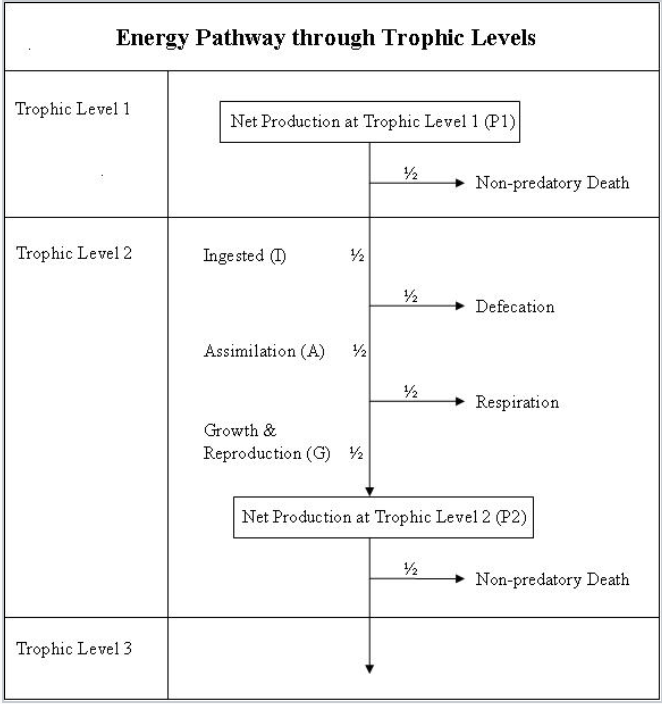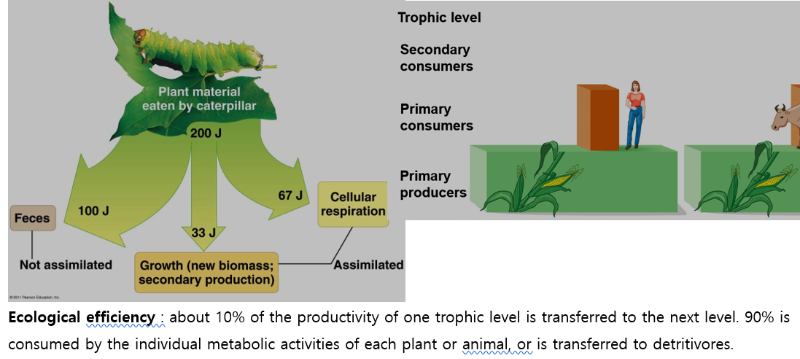안녕하세요
Secondary consumer가 primary consumer를 먹었을 때 에너지를 33J 밖에 못 먹는다는 뜻인가요? --> 네...그러니까..
아래 그림을 보실까요?
Net production of trophic level 1 (P1) 의 반은 잡아먹히지 않고 그냥 죽고 대략 1/2정도가 다음 trophic level 2 에게 먹힙니다.
그중의 1/2은 assimilate되지 않고 feces으로 나가고 assimilate된것의 1/2 도 cellular resp, 즉 heat loss으로 나가고 결국은
1/2 * 1/2 * 1/2 =1/8 , 즉 대량 10% 만이 Net production of trophic level 2( P2) 가 되는거죠.
즉, primary consumer가 primary producer에게서 얻은 에너지의 10% 만 Secondary consumer가 얻을 수 있다는 것이죠? --> 맞습니다.


선생님의 노트에 있는 그림으로 보면,
plant 를 400 J라고 했을때 대략 그의 반, 200J 이 먹히는데 그중 100J은 feces으로 나가고 몸으로 assmilated된 100J중에서 67J은 cellular resp 으로 나가고 33J만 caterpillar level에 남는다는 겁니다. ( 400J의 10% 가 33J 은 아니지만 그냥 평균적으로 10프로 라고 하는것임)
다음 은 ENERGY efficiency 10% law, 위키피디아에서 발췌한 내용입니다. 이해를 돕는데 참고가 되길 바랍니다 ^--^
When organisms are consumed, 10% of the energy in the food is fixed into their flesh and is available for next trophic level (carnivores or omnivores). When a carnivore or an omnivore consumes that animal, only about 10% of energy is fixed in its flesh for the higher level.
For example, the Sun releases 100 J of energy, then plants take only 10 J of energy from sunlight; thereafter, a deer would take 1 J from the plant. A wolf eating the deer would only take 0.1 J. A human eating the wolf would take 0.01J, etc.
